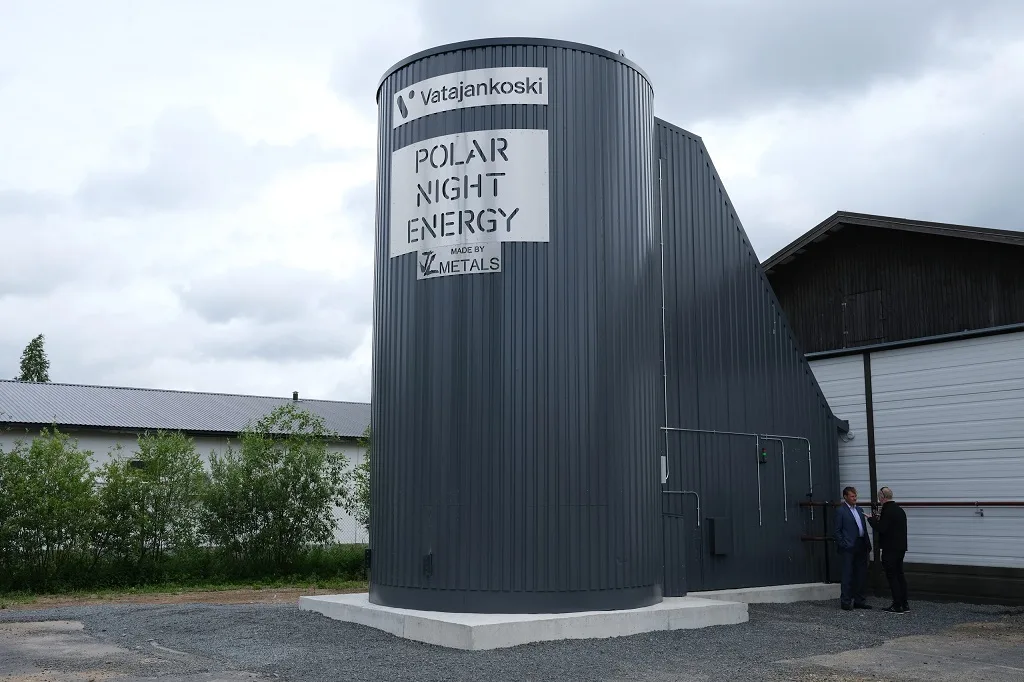With the world’s ever-increasing demand for sustainable and renewable energy sources, the exploration and implementation of innovative technologies have become paramount. Among these emerging solutions, sand battery technology has shown promising potential as a game-changer in the energy storage domain. This article delves into the essence of sand batteries, their operation, applications, effectiveness, potential uses, and whether they stand as mere hype or a significant prospect for the future of energy.
What is Sand Battery Technology?
Sand battery technology, an ingenious approach to energy storage, harnesses the simplicity and abundance of sand to store thermal energy. This method involves heating sand to high temperatures using surplus renewable energy, then storing the heat until it’s needed. The principle is straightforward yet effective, leveraging the high heat capacity of silica sand to store energy in the form of heat.
The appeal of sand batteries lies in their use of readily available materials and their potential to integrate seamlessly with existing renewable energy sources, such as solar or wind power. By storing excess energy produced during peak production times, sand batteries can release it when demand rises, thus balancing the energy grid and reducing dependency on fossil fuels.
Furthermore, the environmental footprint of sand batteries is minimal, as they utilize natural, abundant sand, avoiding the need for rare or toxic materials often associated with other energy storage technologies. This aspect makes sand batteries a sustainable option, aligning with global efforts to combat climate change and transition to greener energy solutions.
How Do Sand Batteries Work and What Is Their Potential?
The core mechanism of sand batteries involves heating sand to temperatures around 500-600 degrees Celsius using electrical energy, typically from renewable sources. The heated sand retains this thermal energy, which can be efficiently stored for extended periods. When energy is required, the stored heat is transferred to a working fluid, such as water or air, which can then be used to generate steam and drive turbines, producing electricity.
This ability to store and release energy on demand offers a flexible solution to one of the renewable energy sector’s most significant challenges: intermittency. The potential of sand batteries extends beyond mere energy storage; they represent a critical step towards stabilizing and making renewable energy sources more reliable and predictable.
Where is Sand Battery Technology Already Used and How Has It Been Successful?
Sand battery technology is in its nascent stages, but pilot projects and research initiatives are underway globally. For instance, a pioneering project in Finland has demonstrated the feasibility and effectiveness of sand batteries in a real-world setting. This project successfully integrated a sand battery system with a local district heating network, showcasing its potential to store and supply heat in an efficient and environmentally friendly manner.
The success of such projects highlights the versatility of sand batteries, not just in electricity generation but also in heating applications. This broadens the scope of their applicability, from residential heating solutions to industrial processes that require thermal energy.
Moreover, the operational longevity and low maintenance of sand batteries, combined with their scalability, make them an attractive option for various settings, ranging from remote communities to large urban areas, further proving their practicality and success in diverse applications.

How Effective is This Technology?
Sand battery technology’s effectiveness hinges on its capacity for high energy storage, long-term heat retention, and the ability to release energy efficiently when needed. The technology’s inherent simplicity and the use of non-degradable materials like sand ensure minimal loss of efficiency over time, making it a robust and reliable energy storage solution.
Where Else Can It Be Used?
Beyond their current applications, sand batteries have the potential to revolutionize sectors reliant on thermal energy. Industries such as glassmaking, ceramics, and even food processing can benefit from the sustainable and cost-effective thermal energy storage solutions that sand batteries offer.
Additionally, the integration of sand batteries with desalination plants or agricultural projects requiring controlled temperature environments presents a promising avenue for expanding their use. This versatility underscores the technology’s potential to contribute to various aspects of a sustainable future.
Is Sand Battery Technology Just Hype or a Genuine Prospect?
While still in the early stages of adoption, the foundational principles and successful pilot projects of sand battery technology suggest it is more than mere hype. Its alignment with global sustainability goals, combined with its potential to address the intermittency challenge of renewable energy, positions sand batteries as a significant prospect for the future energy landscape.
As research continues and technology matures, the widespread implementation of sand batteries could play a crucial role in the global shift towards renewable energy, marking it as a genuine prospect with far-reaching implications for energy storage and sustainability.

